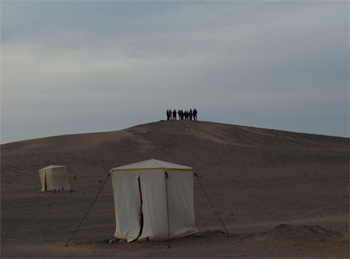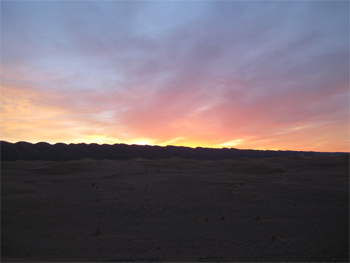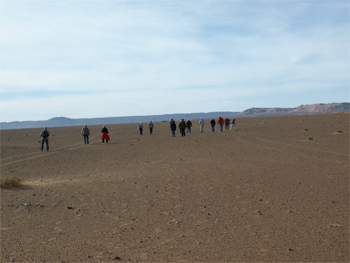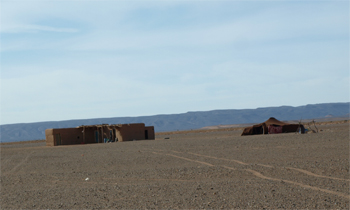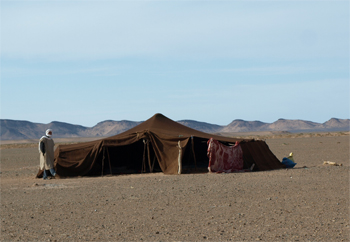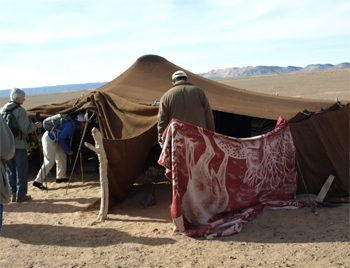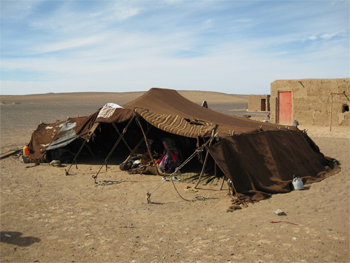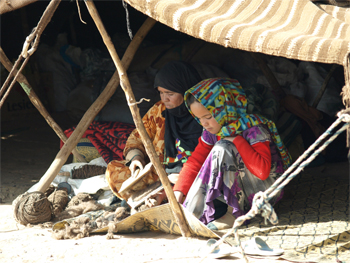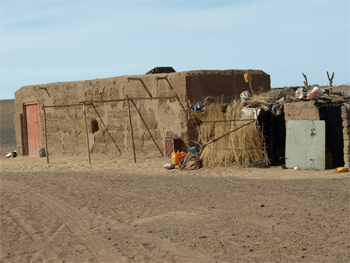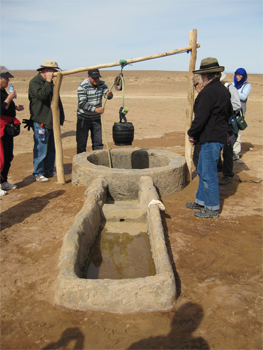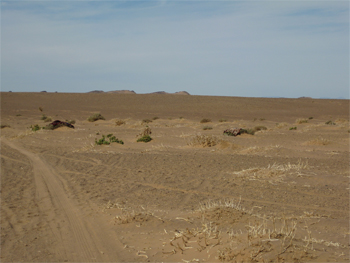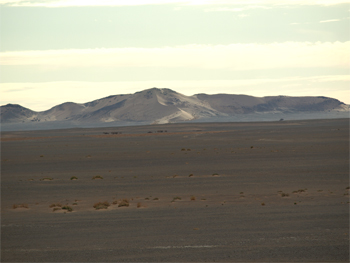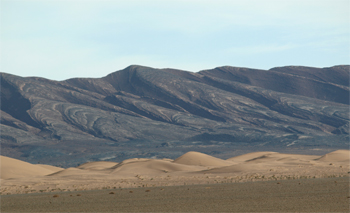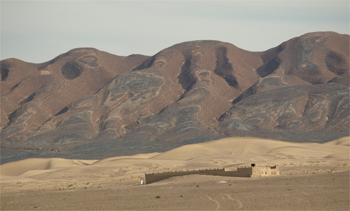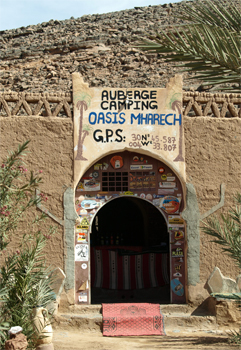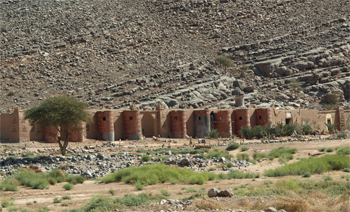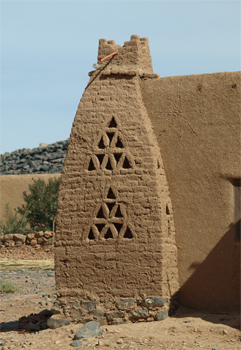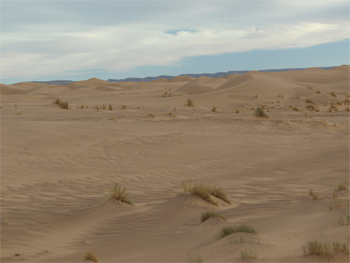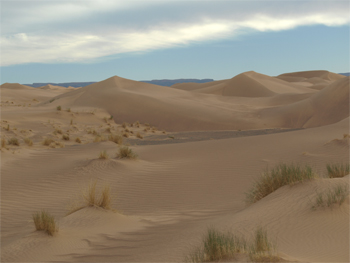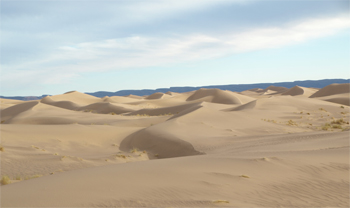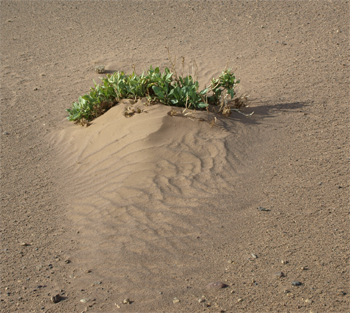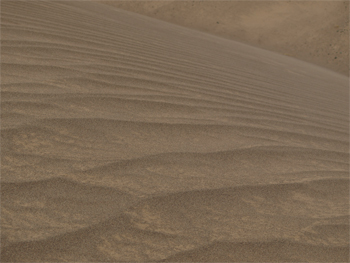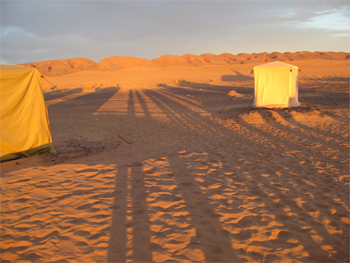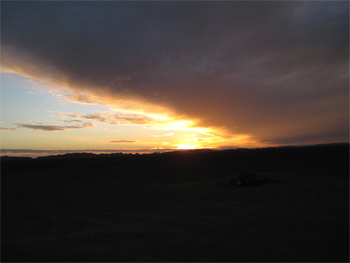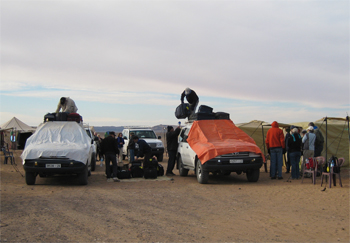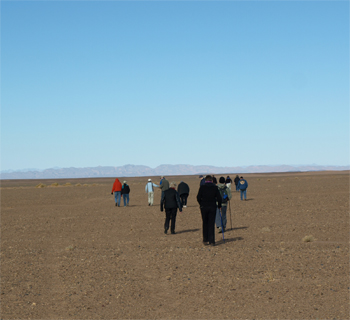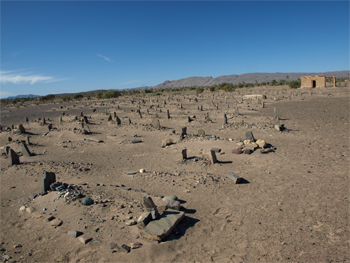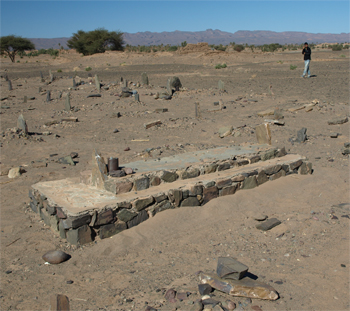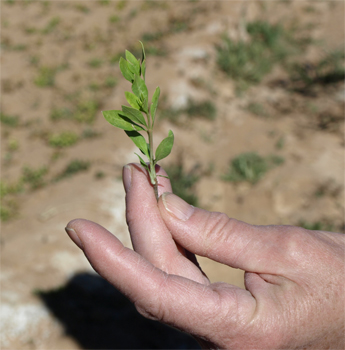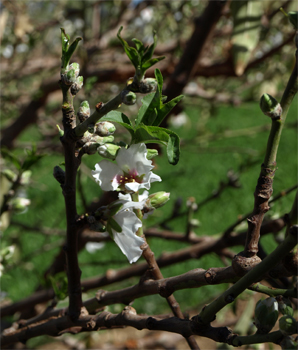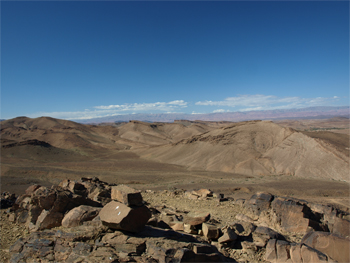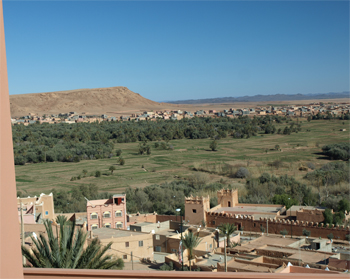Thurs., 2/10/11 - Sahara Desert
This morning some of the group (including Gale) got up before dawn – it was probably around 40 deg. – to go up to the top of the nearby hill to see the sunrise. Marge stayed under the warm blankets and felt quite smug when it turned out to be only an average sunrise.
Fri., 2/11/11 - Sahara Camp to Tineghir
This morning the 42° in our tent didn't seem as cold as yesterday. We are either getting used to it or learning to deal with our heavy, heavy blankets and hot water bottles more effectively.
After a breakfast of the same yummy frittata/omelet and another donut like fried bread, we loaded the jeeps with our bags and set off to walk west across the desert for our morning exercise.
Loading up |
Hiking across the desert again
|
After about 40 minutes we got in the jeeps and rode to a Berber cemetery in the outskirts of Fezzou village. In a city Moslems are buried in a tomb of marble or stone. In villages the graves are just marked with a mound of dirt and a stone stuck in the ground at the head and foot. Some of the stones were close together indicating a child's burial. There are no names identifying the graves but a written registry is kept. Every time someone comes to visit a grave, they add a stone to the grave or put it in a can on the grave.
|
|
Berber cemetery |
Berber cemetery
|
Our next stop was at a Berber farm in this semi-Saharan desert area. The farmers use a diesel pump to pull up water from the water table and run it through PVC pipe and ditches to water the small crop patches that measured about 9 x 12 feet. They grow mint (for tea), carrots, henna, fava beans, alfalfa (that is cut every 20 days and grows all year), wheat, onion, cumin, and rosemary. Interspersed between the plots are date, pomegranate, apple, fig, apricot, and almond trees. The two extended families that work this farm eat what they need and sell the rest at the village market in Alnif.
|
|
Small plots |
Diesel pump for irrigation
|
Henna |
Henna
|
Water has a high salt content
|
Almond blossom |
Barrier to keep out drifting sand
|
On the way to Tineghir we stopped for a panoramic view across to the High Atlas Mountains. They do not have snow. We looked out for miles and saw at least three good-sized towns.
|
High Atlas in the distance
|
High Atlas in the distance |
Tineghir Valley farm plots
|
Tineghir from hotel room |
